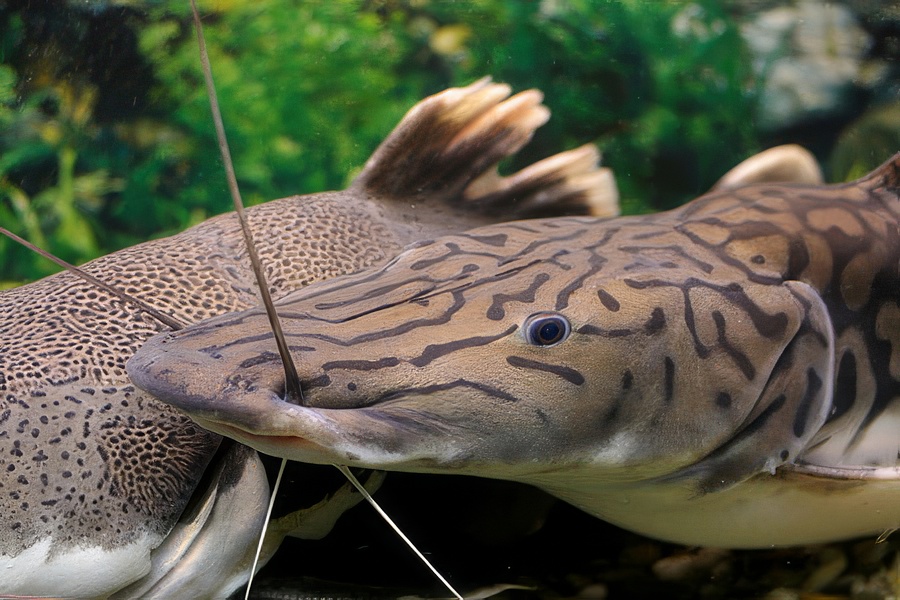Pintado
Pintado
Pintado and Cachara are two species of large shovel-nosed catfish common in the Pantanal and favourite with fishermen. Both measure up to 1m in length, with the main difference being coloration - the Pintado is spotted, whereas the Cachara is striped.
Pintado
However, Pintado and Cachara are iconic of the Pantanal - and a common feature on regional menus. Adults typically measure up to 1m, although the record is 1.6m and 100 kg. Aside from their size and markings (the Pintado is spotted, whereas the Cachara has transverse stripes), the species can be distinguished by their long body, long flattened heads and long sensory whiskers. These whiskers, protruding on either side of their snout, reach up to half their body length. Unfortunately, Pintado and Cachara within Brazil are smaller than those in the southern part of their range (Argentina) due to greater fishing pressures on the Brazilian side of the frontier.
Behaviour and Habitat
Pintado and Cachara feed on smaller fish such as electric knifefish (tuvira), cichlids, loricariids, and characins. They may consume on other fish such as sábalos, and bogas. Opportunistic feeders, they may also feed on crustaceans such as crabs or shrimp.
Females are the larger of the two sexes - growing at a faster rate than the males. However, males are more numerous with a proportion of approximately three males to each female.
Scientific Name
Pseudoplatystoma corruscans
Pseudoplatystoma fasciatum

Local Name
Surubim-Pintado or
Surubim-Cachara

Description
Large catfish, up to 1 m in length. Typically dark grey-brown in colour with a lighter underside. Species can be distinguished by their markings: The Pintado has dark spots, whereas the Cachara has dark transverse stripes. Both species have a long flattened head and nose (hence the english name, Shovel-nosed Catfish).
Economic Importance
Because of the species’ popularity, some organisations are now working on artificial breeding and aquaculture programmes for commercial sale and to supplement wild populations.
Notes for Fishing
Minimum legal size to catch is 80 cm.
Reproduction
Close-up of two other closely related species, Pseudoplatystoma reticulatum from the Amazon region. These are similar to Pantanal species but differ in markings. Credit: iStock/dmitriyd
An illegal catch of Pintado and Cachara confiscated by IBAMA (Brazil's Environmental Protection Agency) during the Piracema period in the Cuiabá river. Credit: Lenine Martins/Secom-MT
Conservation and Threats
Quick Facts
- Although they don't swim together in schools like other fish, pintado and cachara gather at certain points of the rivers, especially among the branches of fallen trees.
- They are said to be curious - even allowing divers or swimmers to get close.
Banner image: Surubim catfish (iStock/dmitriyd).

